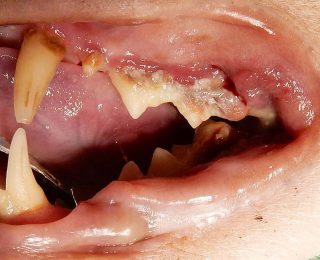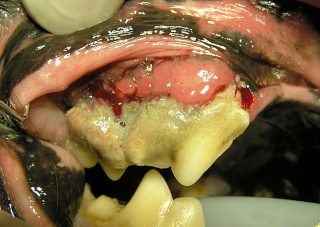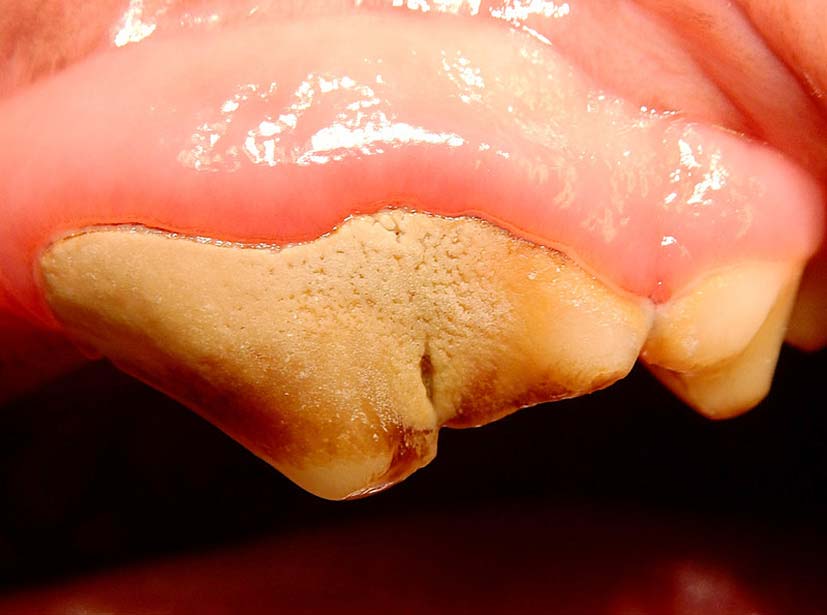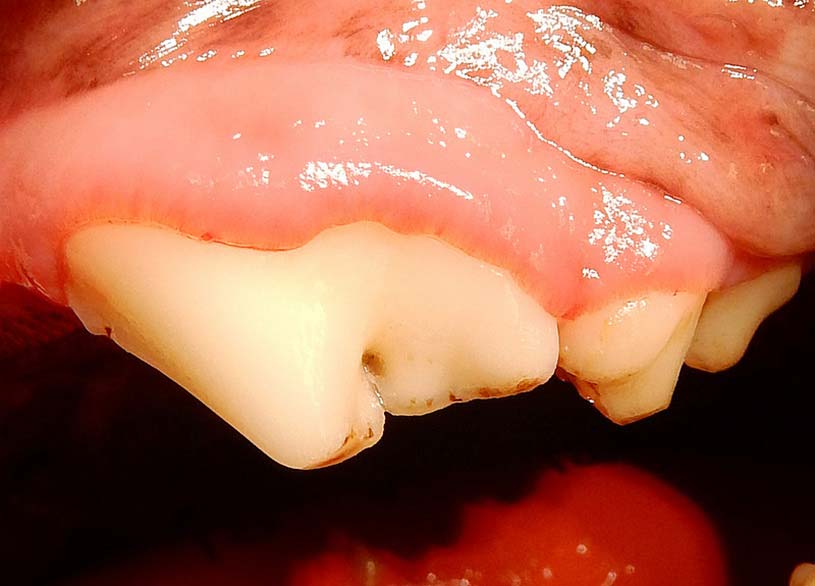14 Nov 2016
Gerhard Putter focuses on the importance of spotting the early signs of oral disease in small animals and ways education on this subject should be taken more seriously.

Figure 1 of 5. A step-by-step guide to lifting the lip – the first crucial step in examination.
Significant progress has been made to practise and promote preventive health care for pet animals.
Specific efforts by both industry and veterinary professionals to make pet owners aware of diseases and conditions that can affect the animals under our care, effective ways of preventing some of these and the potentially serious or life-threatening consequences of neglecting preventive care.
As professionals, vets and veterinary nurses can be justifiably proud of what they have achieved to improve the understanding and knowledge of owners about nutrition, control of internal and external parasites, and vaccination.
Sadly, the same cannot be said for dental and oral care. Most pet owners do not acknowledge the significance of dental and oral disease or recognise the potentially serious local and systemic implications of oral disease and the serious impact on longevity, as well as quality of life.
Most owners remain ignorant of the implications of neglecting the timely treatment of disease affecting the oral cavity and teeth, and the importance of effective preventive oral home care.
We have to accept the role veterinary professionals have played in this failure is as significant as the achievement in preventive care and treatment of other systems. The normal human response to such an accusation would be to blame others. An important portion of this blame could be placed at the door of vets.

A core factor affecting the ability and enthusiasm of vets to address oral disease and care is a lack of teaching dentistry at veterinary schools of most British and European universities. This implies newly graduated vets are very poorly equipped to treat the most common conditions affecting pet animals.
The lack of emphasis in the curriculum might create the perception that oral and dental disease is insignificant and conditions deserve less urgent attention. The implications of poor practical skills leads to a lack of confidence to perform effective, atraumatic extractions and oral surgery procedures. This adds to the general impression, in most practices, that dental procedures are less worthwhile.
These procedures, therefore, have leftover time allocated to them and time constraints rapidly smother any grain of clinical interest. If poor equipment, inappropriate instruments and the lack of dental radiography is added to this already toxic mix, it is clear this situation can only be altered with specific attention to change all of the contributing factors.
VNs are not better off either, as very little or no time is allocated in formal teaching and training to establish and develop the significant role VNs can and should play to improve the plight of patients. We can safely assume all VNs are passionate about caring for animals and this implies, with the correct training and support, VNs could play a significant role to change the situation in practices.

A clear understanding of periodontal disease and its implications for the oral cavity, as well as distant oral systems remains paramount. Armed with the understanding periodontal disease is an inflammatory disease that justifies treatment – like inflammation elsewhere we constantly address – the obligation to provide effective advice to clients about oral home care and treatment is established as a normal part of every consultation.
Understanding and practising charting for all dental procedures establishes a very effective client education tool, as well as acting as an essential clinical record.
An oral examination and recording of the findings on a dental chart of all animals that are sedated and anaesthetised only requires a periodontal probe and should not interfere with the primary focus of effective monitoring of the patient. Discussing this “complimentary dental examination” at discharge of patients for other procedures underlines care for the whole patient.
Responding with suggestions of preventive care or procedures indicated by these examinations obviously has a positive impact on practice income and recognises (and acknowledges) the fee generation ability of nursing staff.

 Figures 8a (top) and 8b. Figure 8a and 8b. Heavy calculus associated with moderate gingivitis of the left maxillary fourth premolar and first molar of a dog. The teeth were saved and, if well communicated to the owner, is the first effective step in establishing effective oral care.
Figures 8a (top) and 8b. Figure 8a and 8b. Heavy calculus associated with moderate gingivitis of the left maxillary fourth premolar and first molar of a dog. The teeth were saved and, if well communicated to the owner, is the first effective step in establishing effective oral care.The fact is periodontal disease remains the most prevalent infectious disease affecting dogs and cats. The prevalence established in published papers depends, to a great extent, on the sampled groups, but we can safely assume most of these patients more than three years of age have periodontal disease that requires immediate treatment.
In fact, most patients fall into this age group. It would be wrong to assume all these animals required a dental procedure under general anaesthesia.
Early intervention with home care can effectively reduce plaque burdens – the primary cause of the problem. VNs specifically trained to provide oral care information and continued client and patient support. Training oral care nurses equipped to do exactly this effectively has been identified by the British Veterinary Dental Association and the BVNA as a joint project, and more details are to be revealed.
The fact remains just lifting the lip of all patients in examinations (Figures 1 to 5) will reveal the presence of periodontal disease, but how effectively clinicians perform this task and address the problem is difficult to monitor.
One recommendation is to monitor the severity of periodontal disease in patients admitted for treatment of periodontal disease (Figures 6 and 7). If most of these have advanced periodontitis, a significant proportion of patients that would have benefited significantly from earlier intervention miss out on the benefits of comfortable, disease-free mouths, but also on the significant systemic benefits with positive implications for longevity and quality of life (Figure 8).
The benefits to practices are bonded clients with healthier pets, content nursing staff appreciated for their significant role in patient care and a bottom line that reflects the improvement in client and patient care.